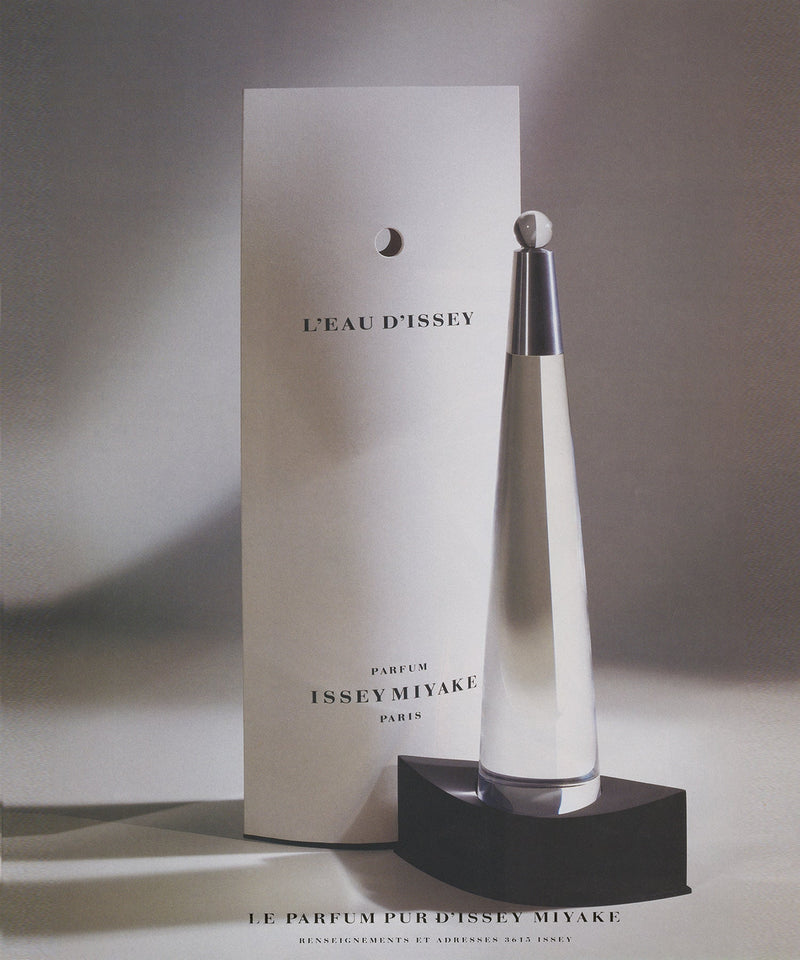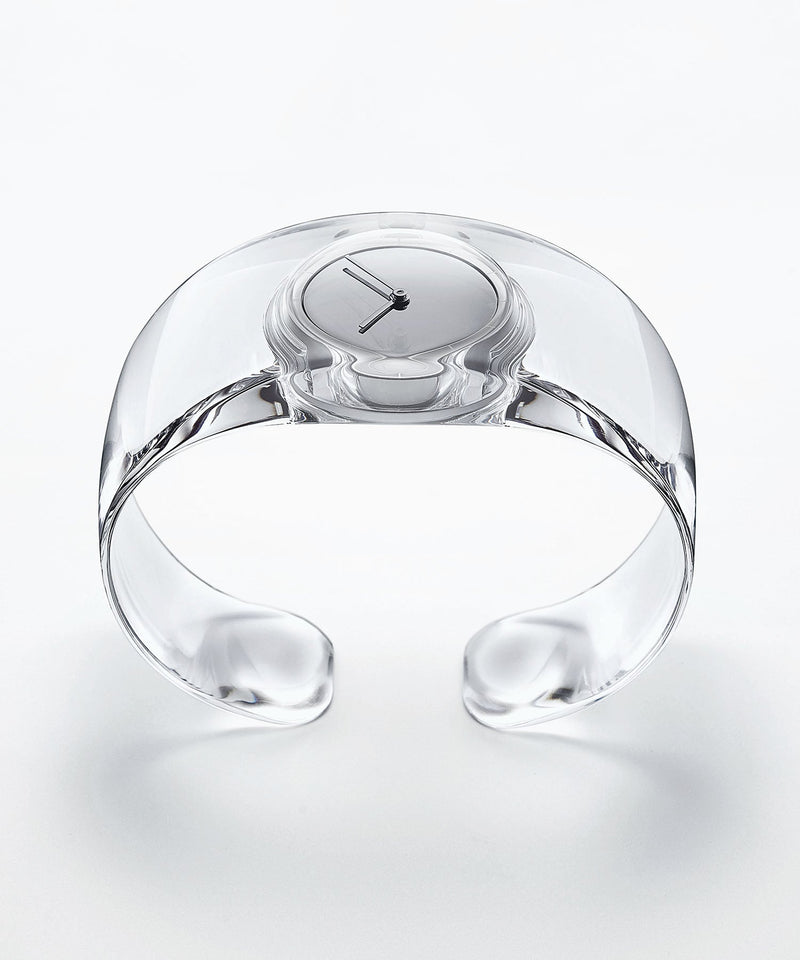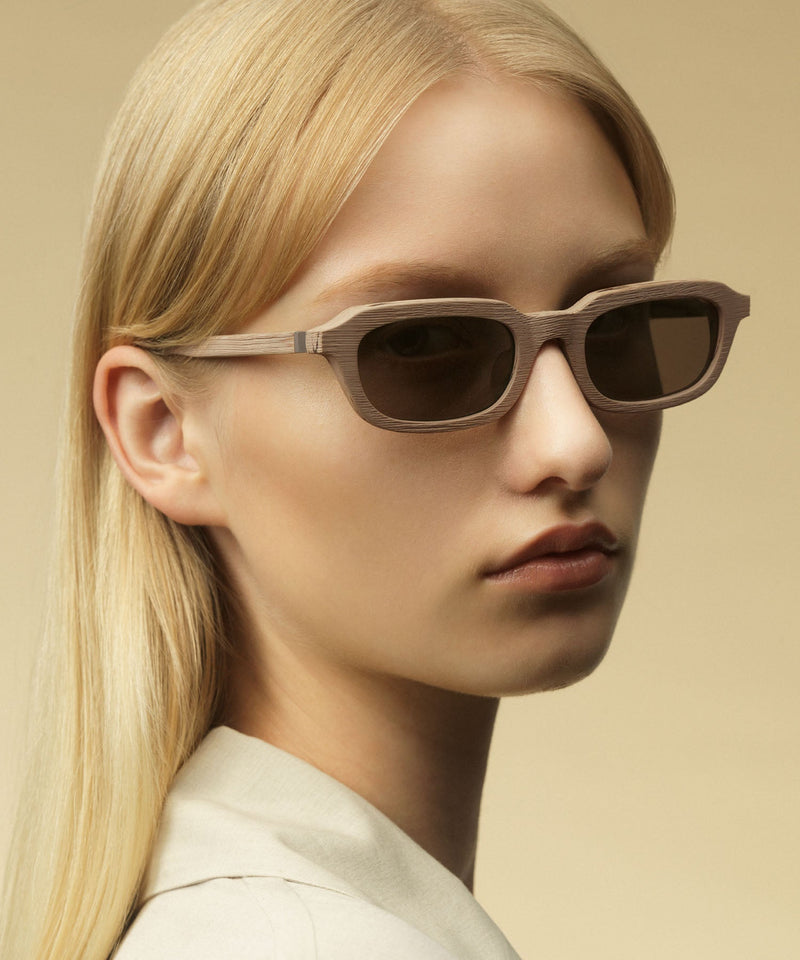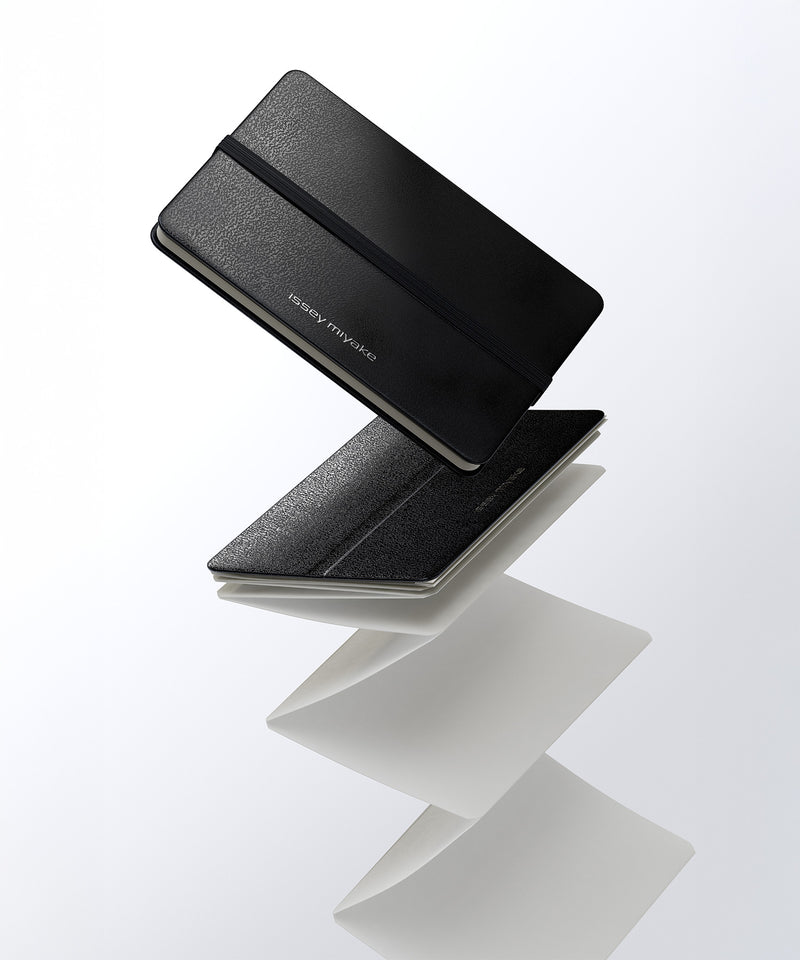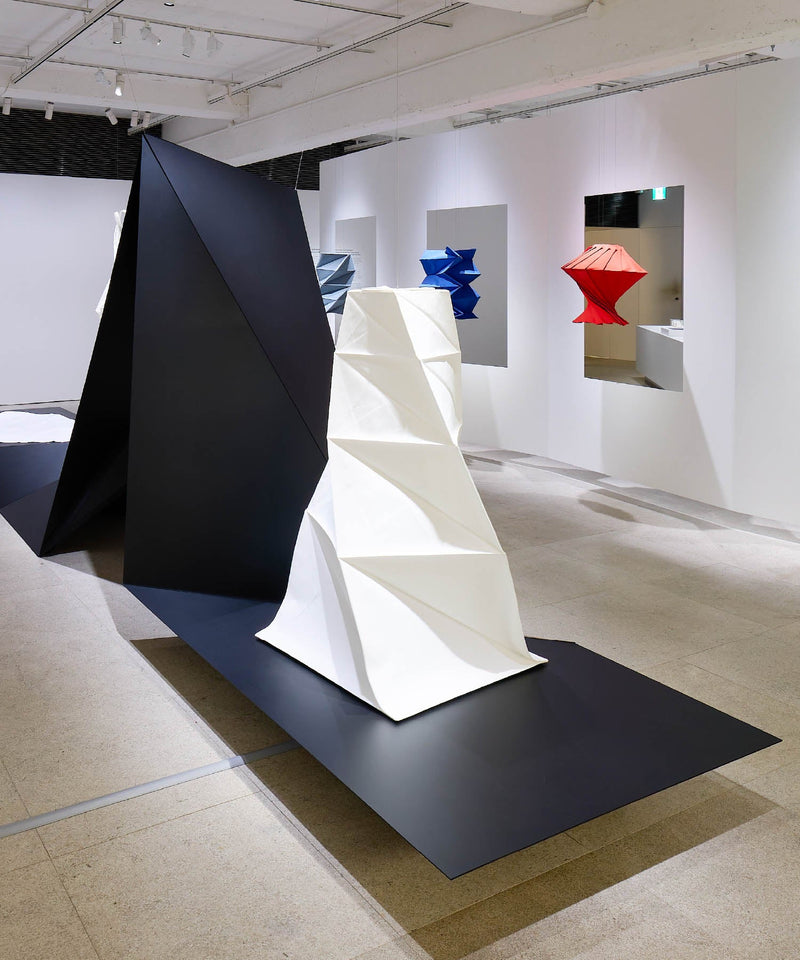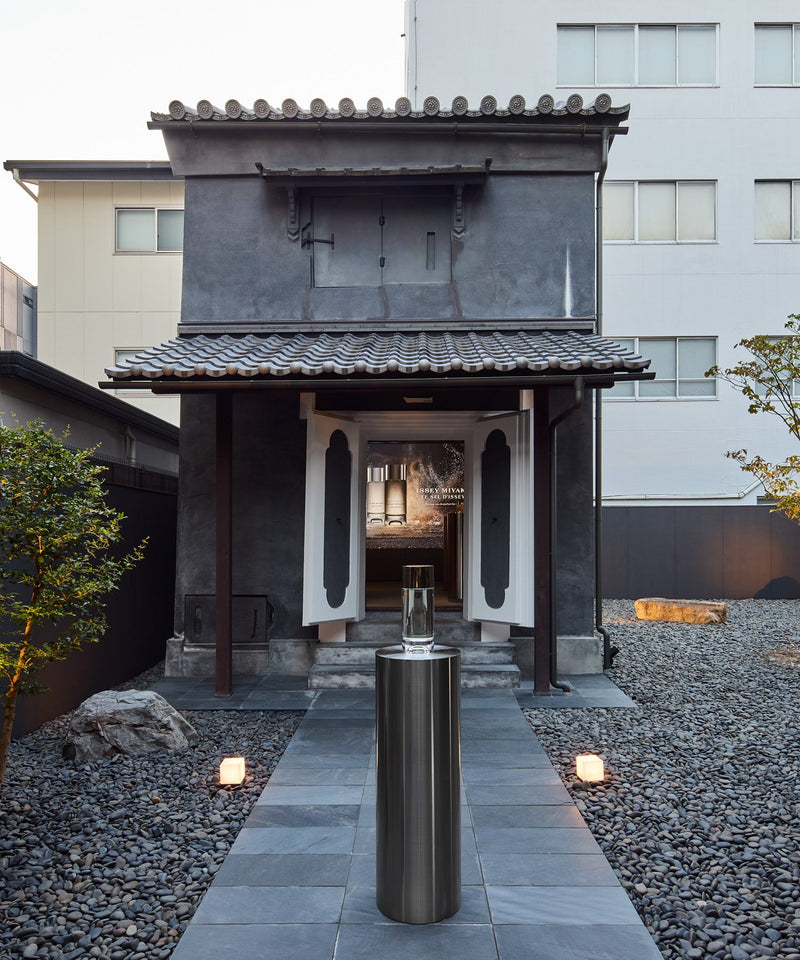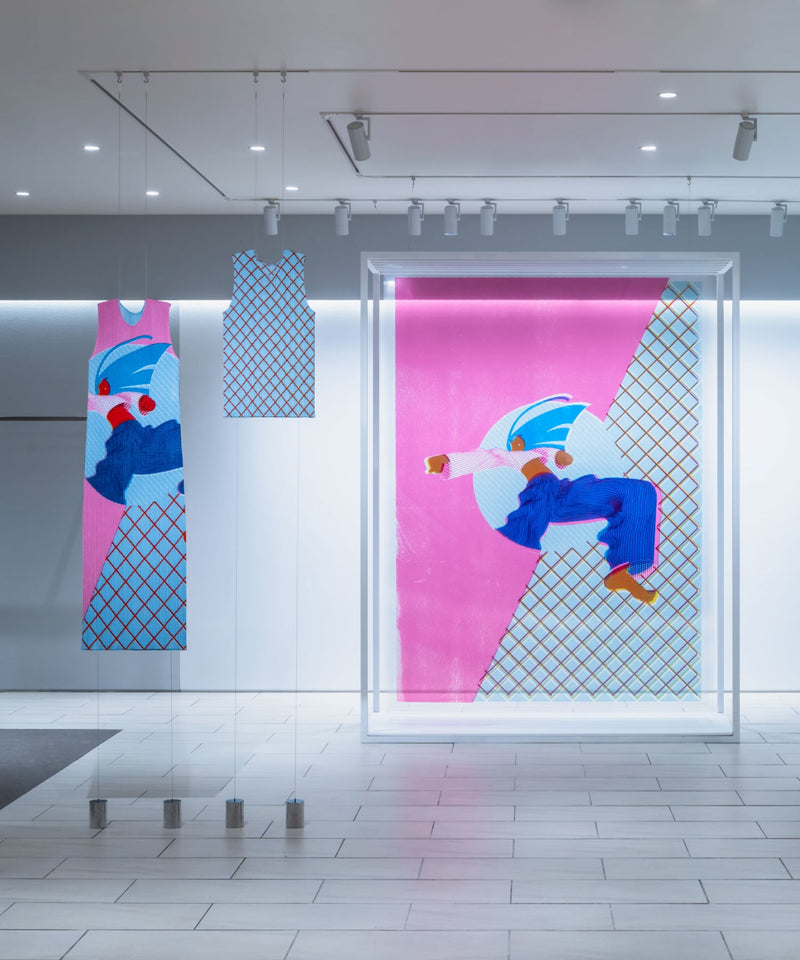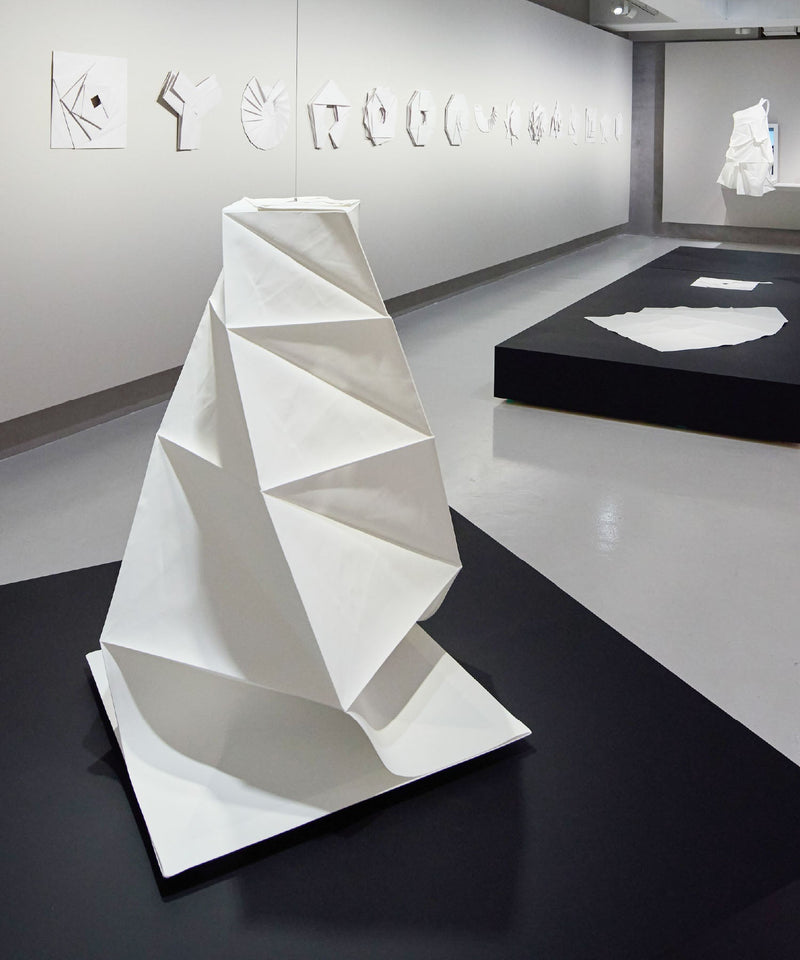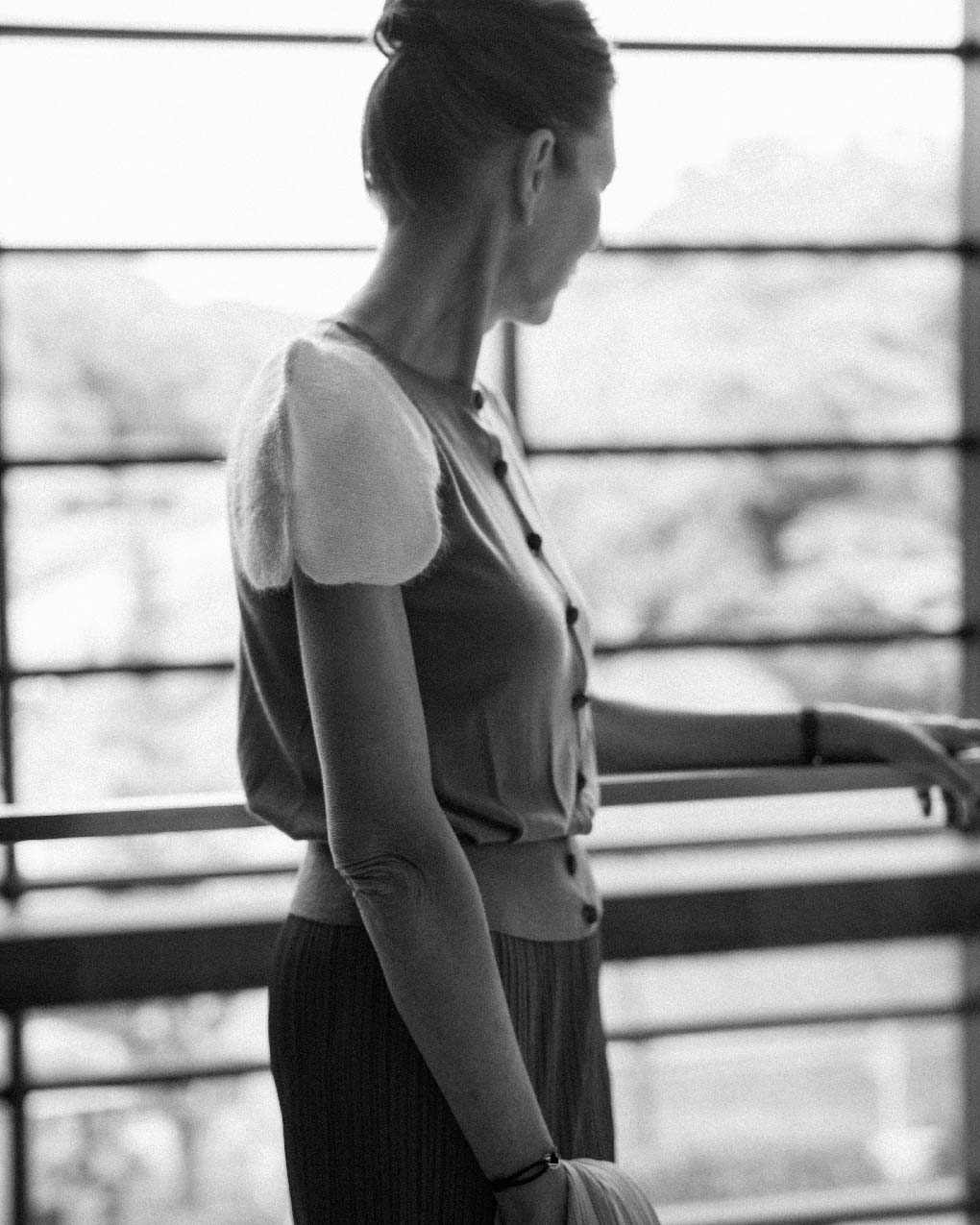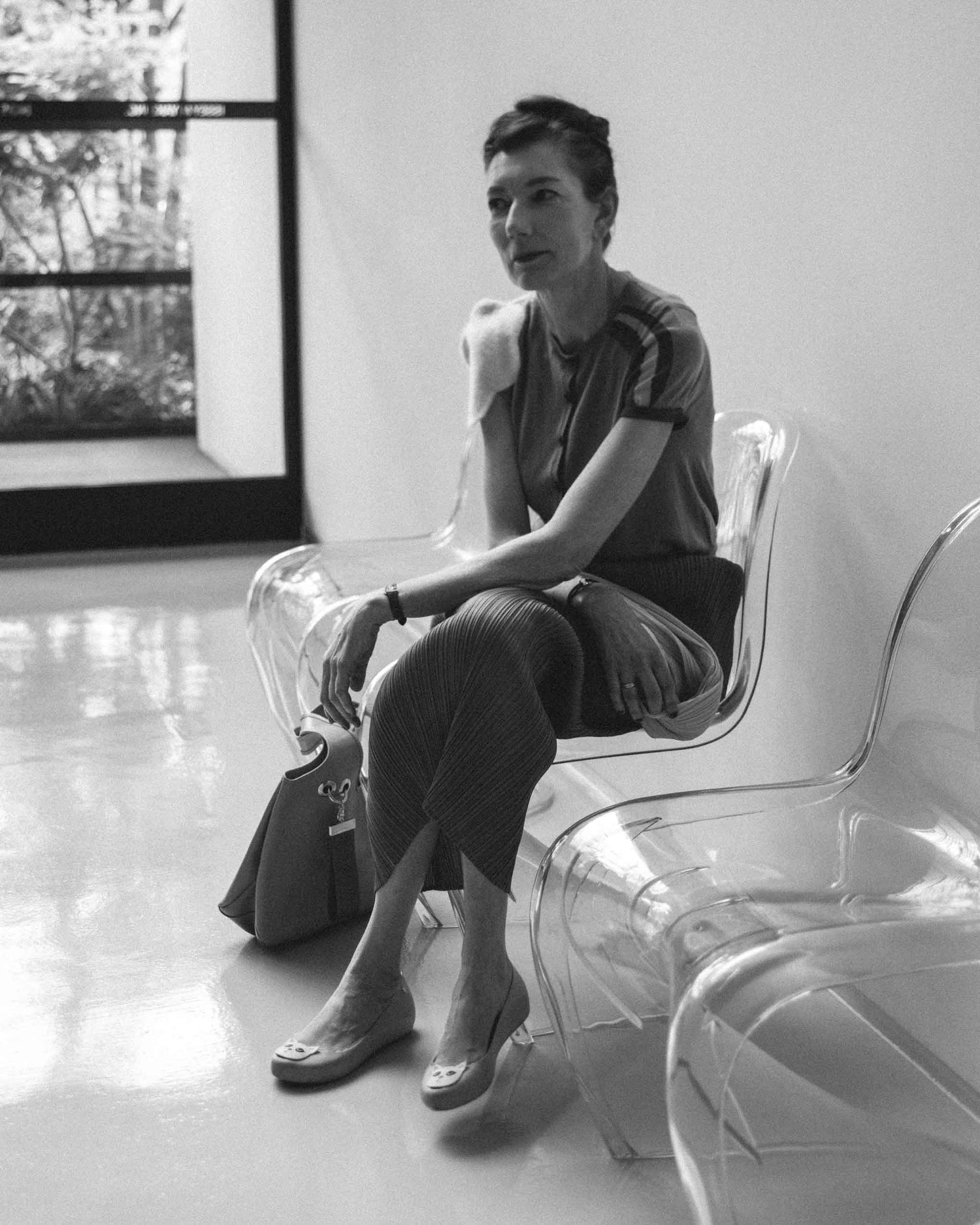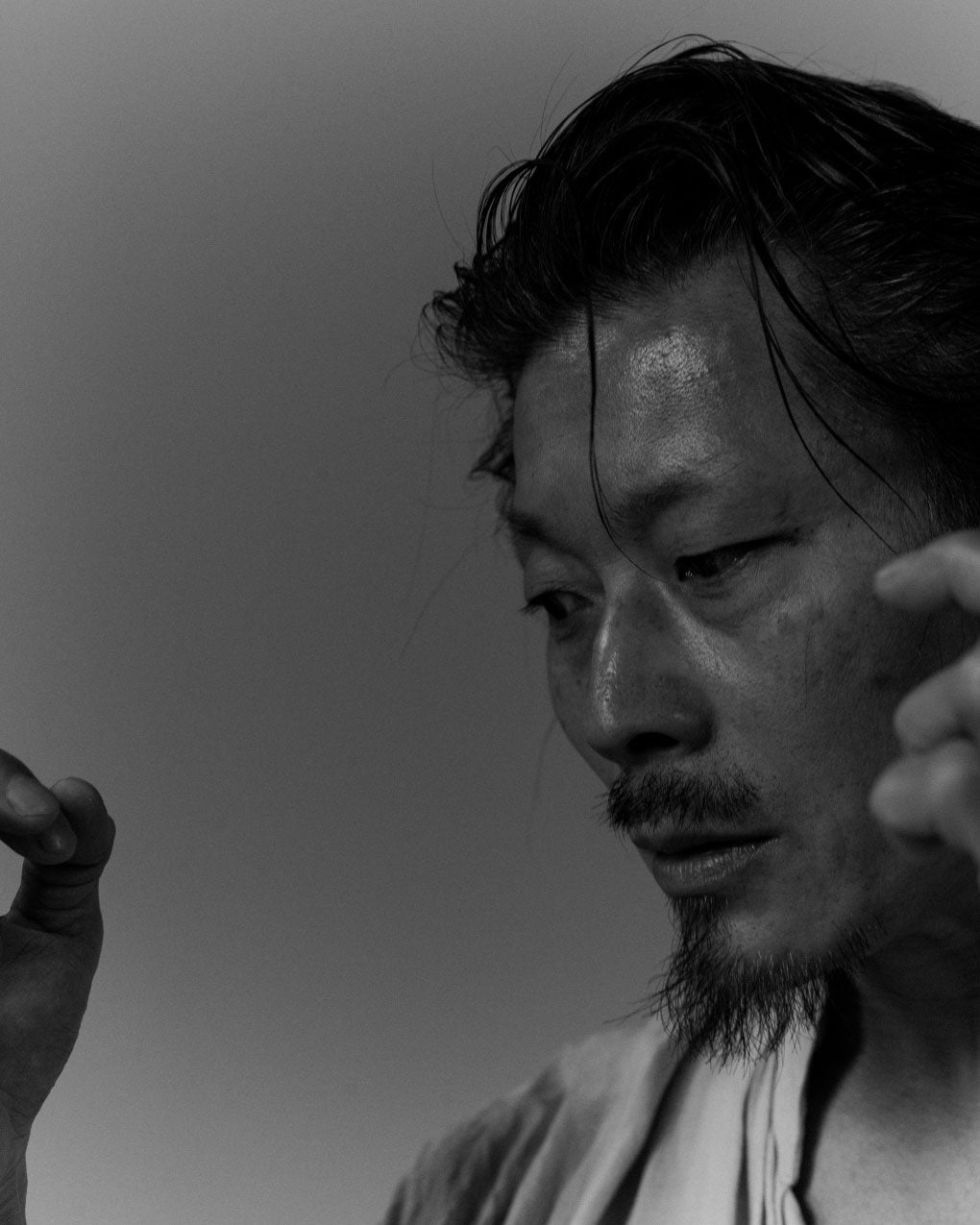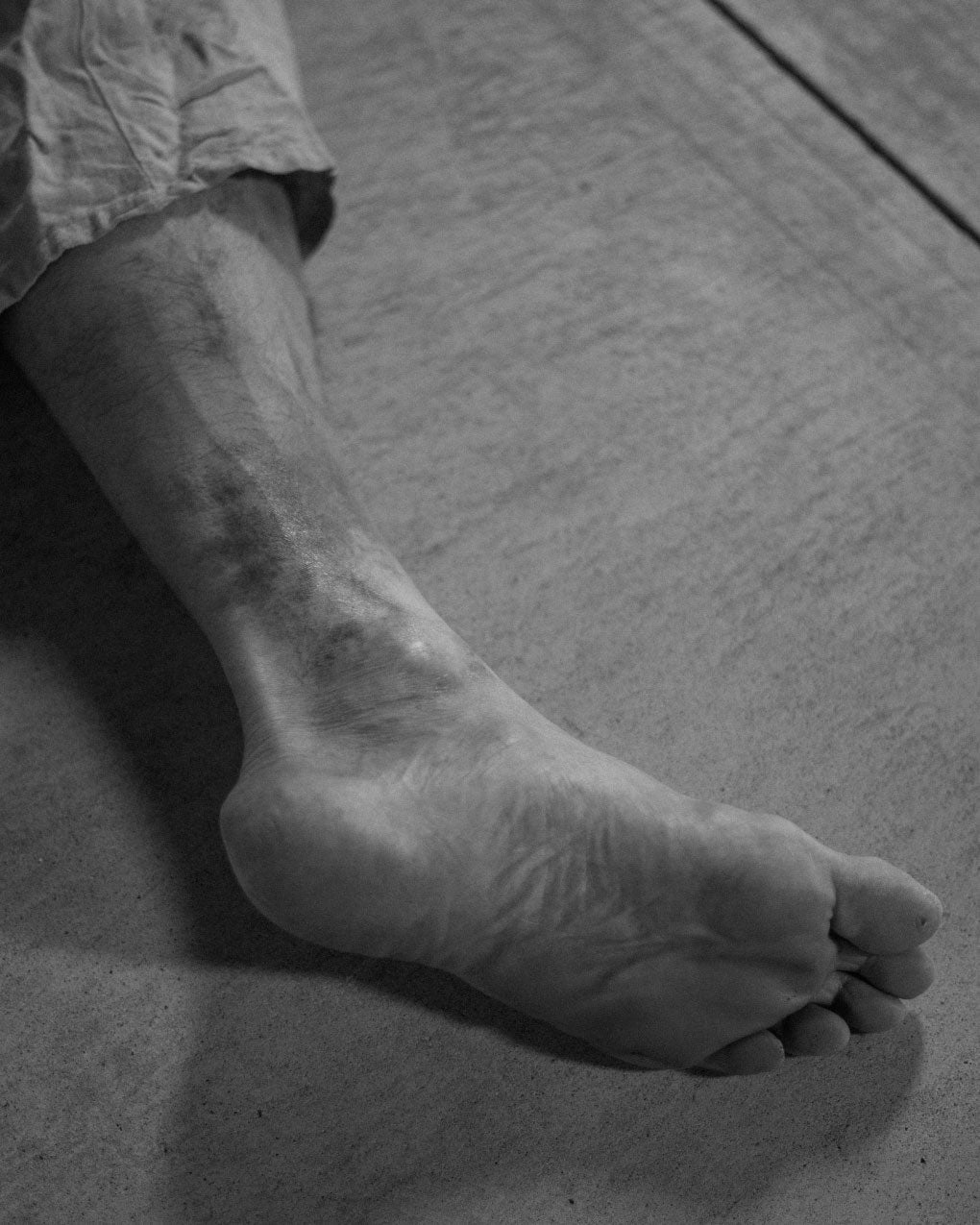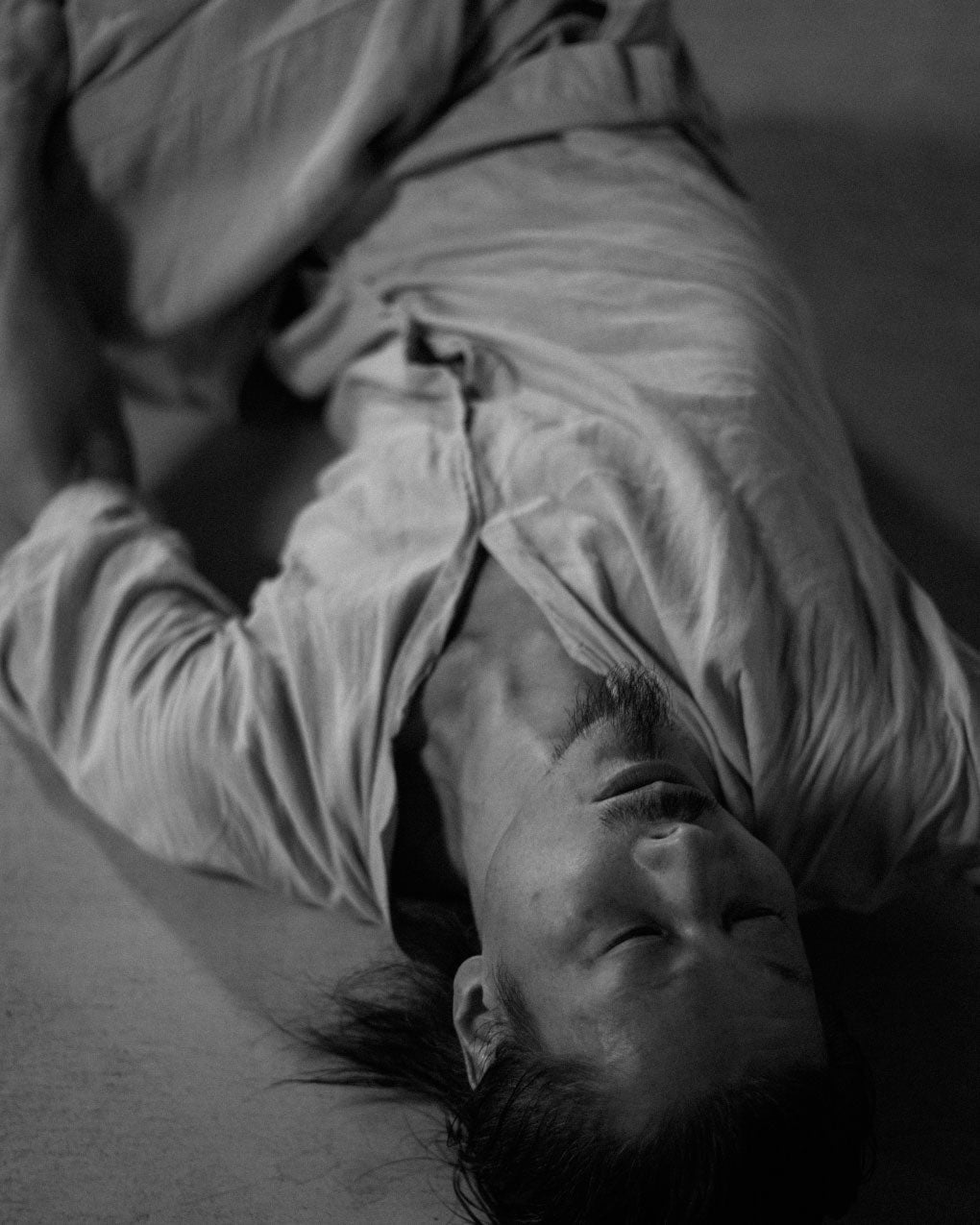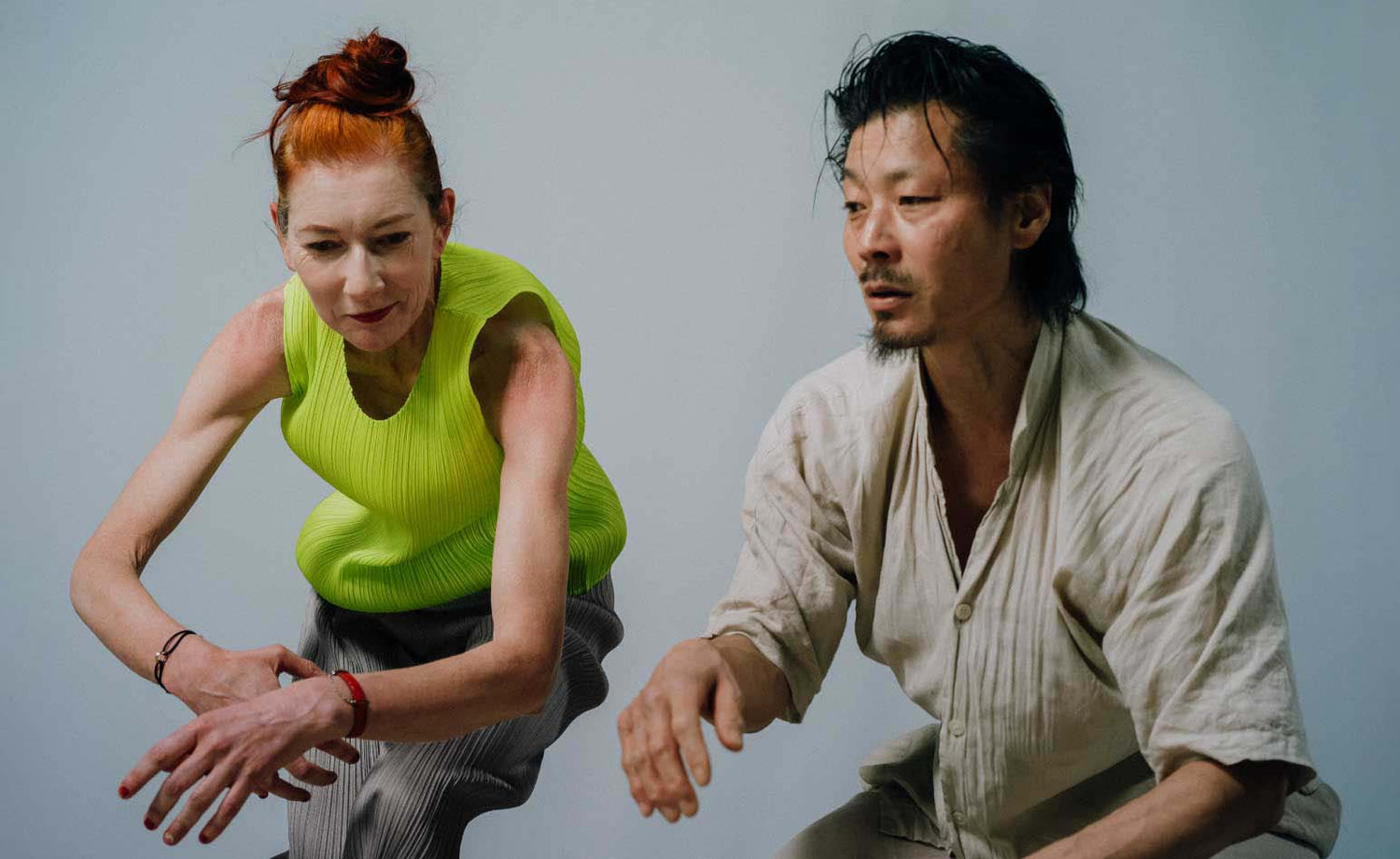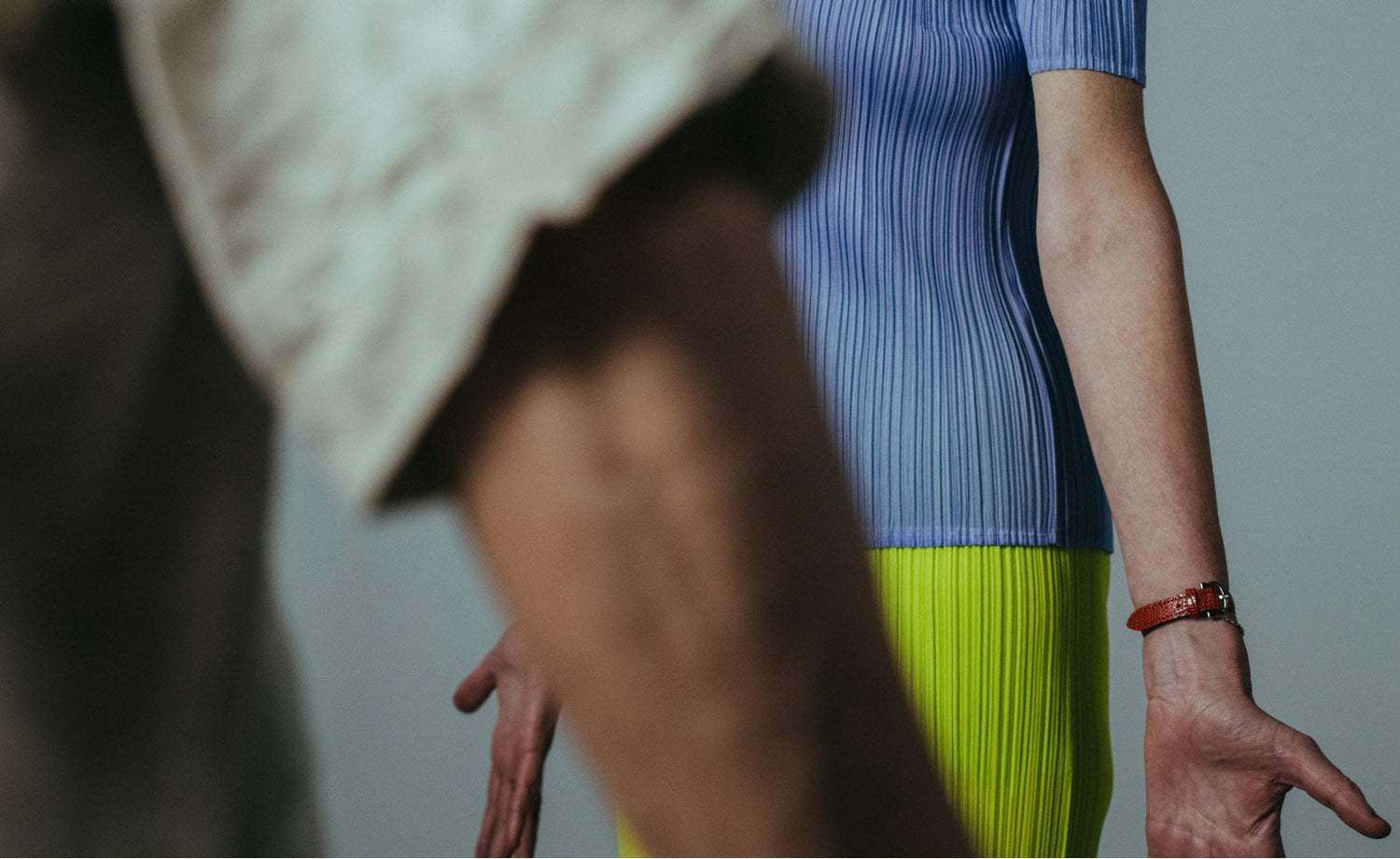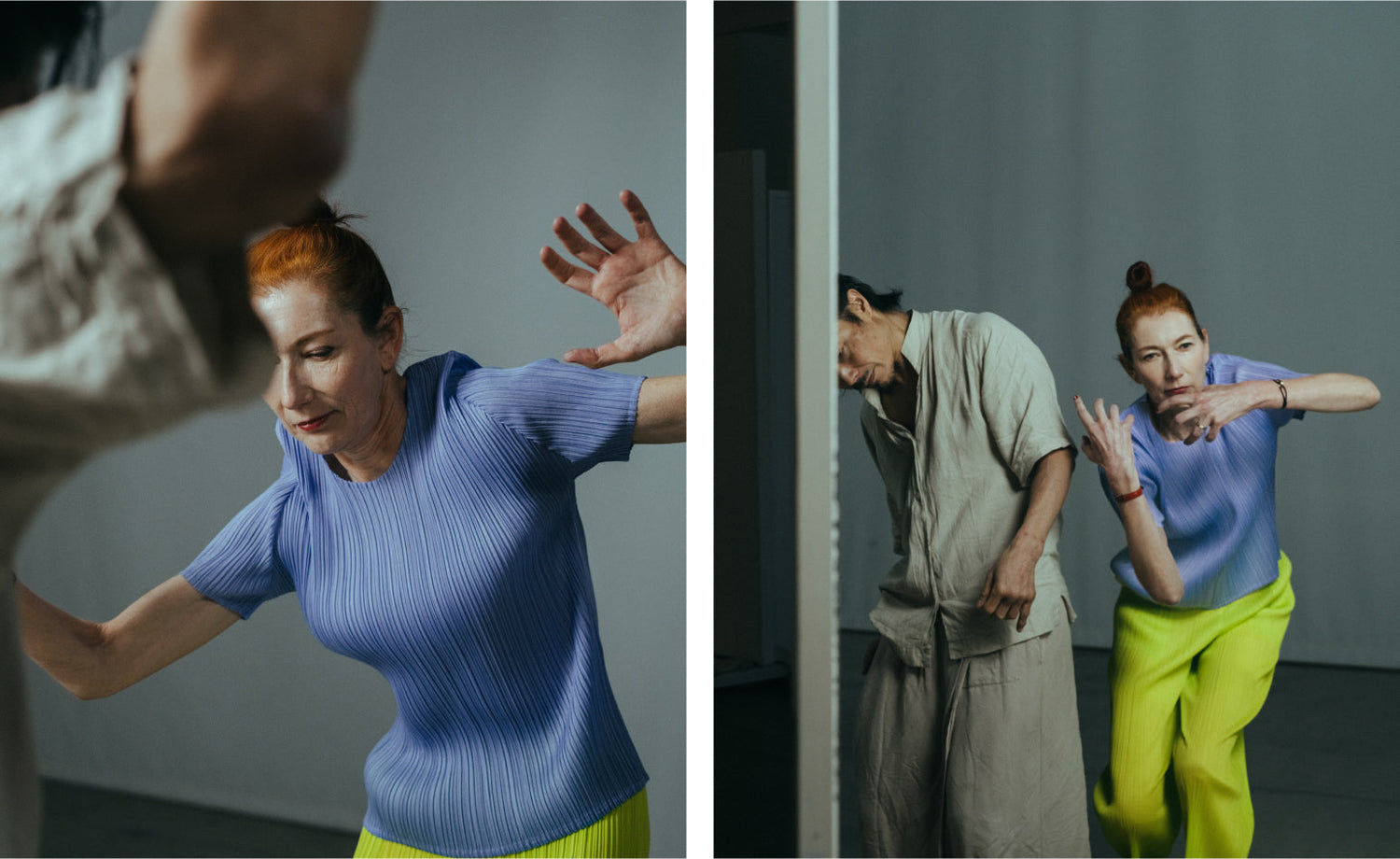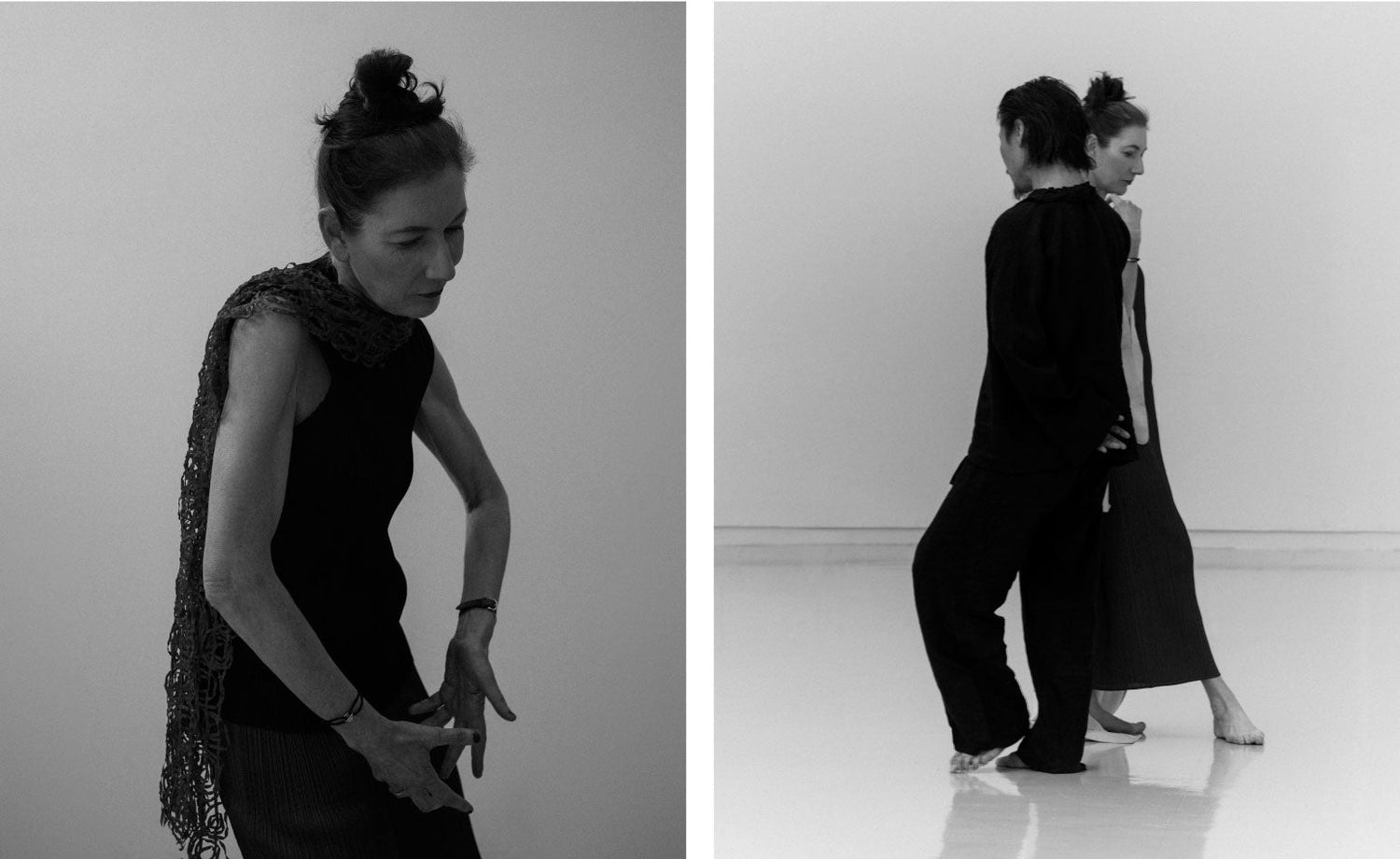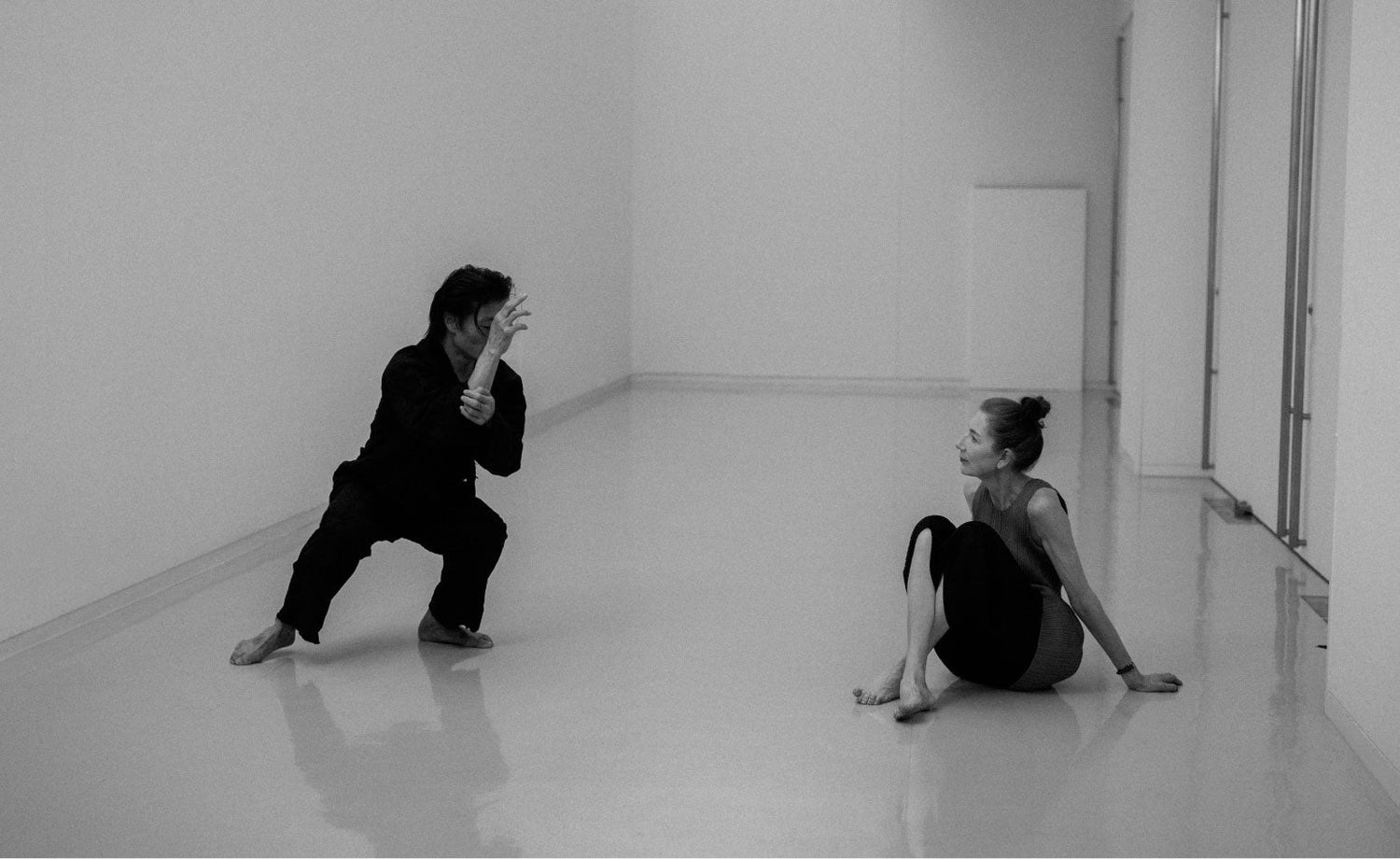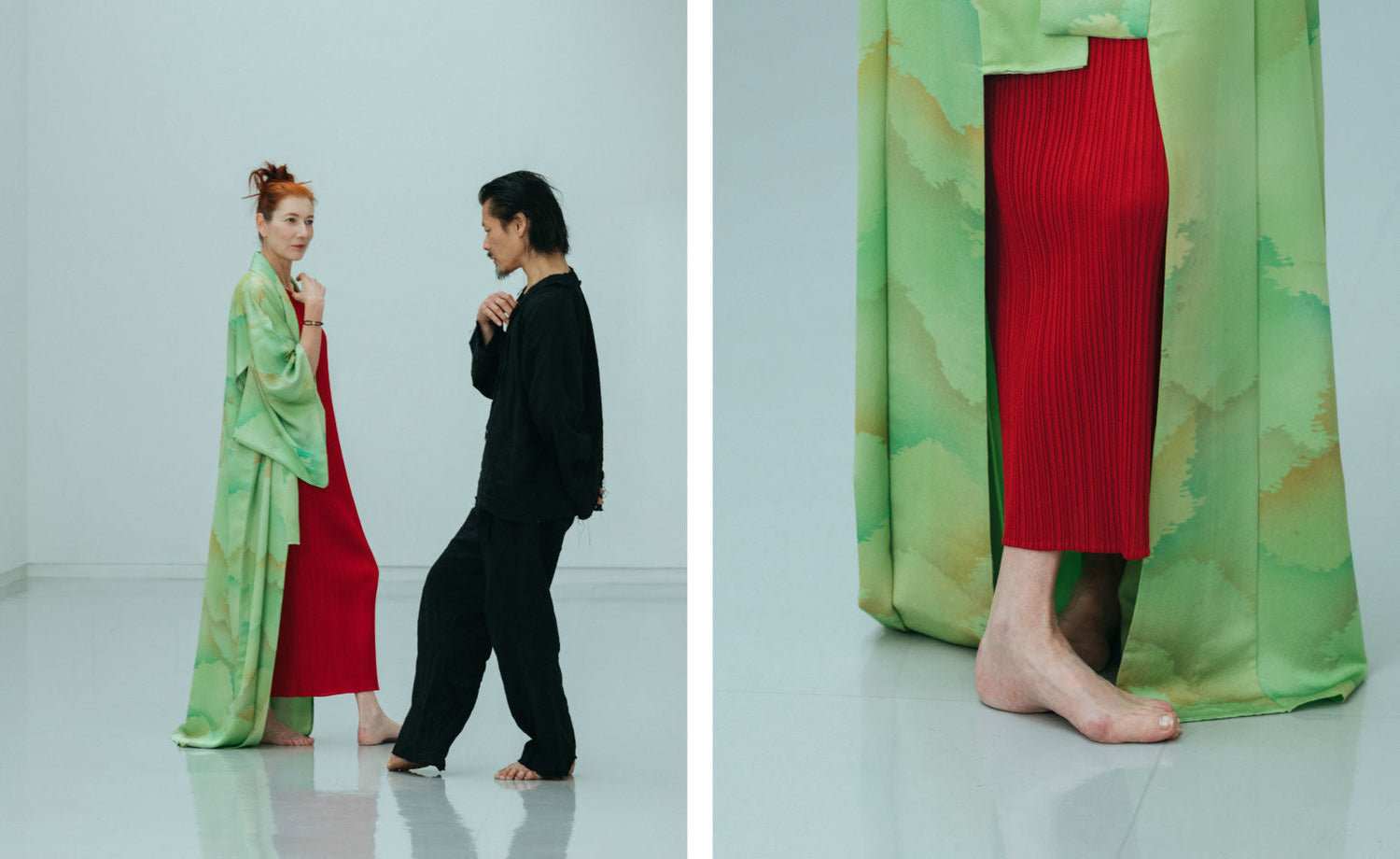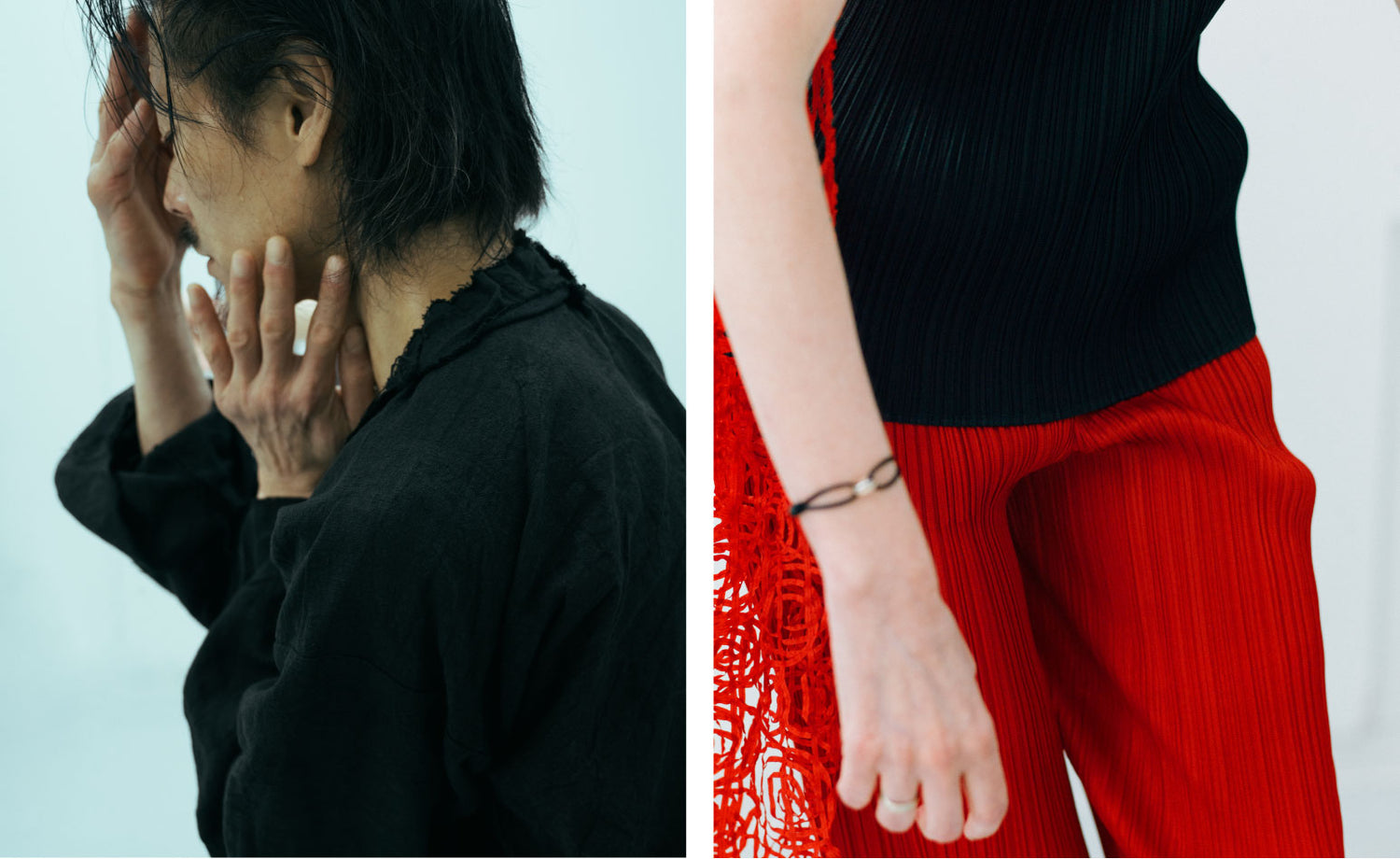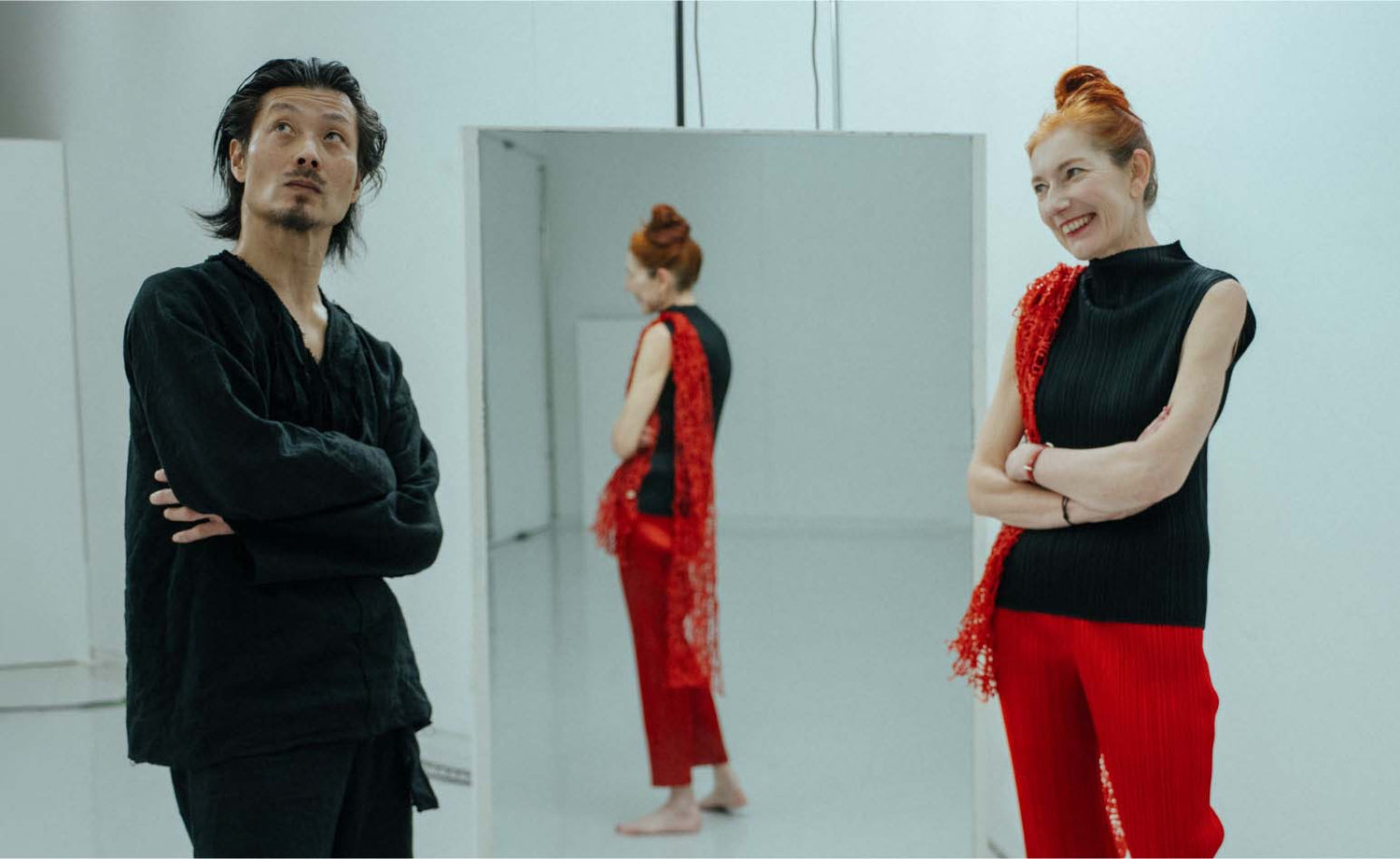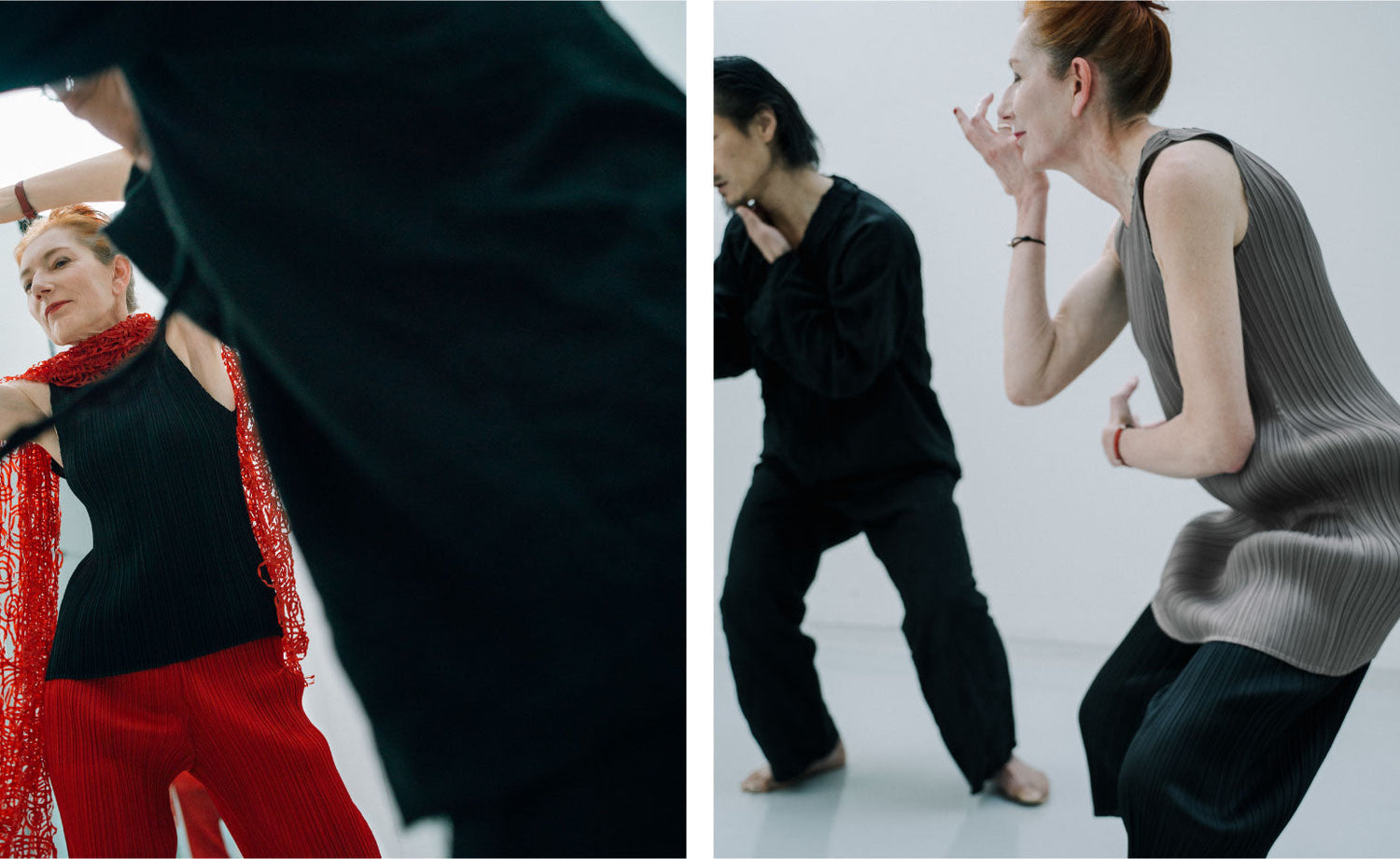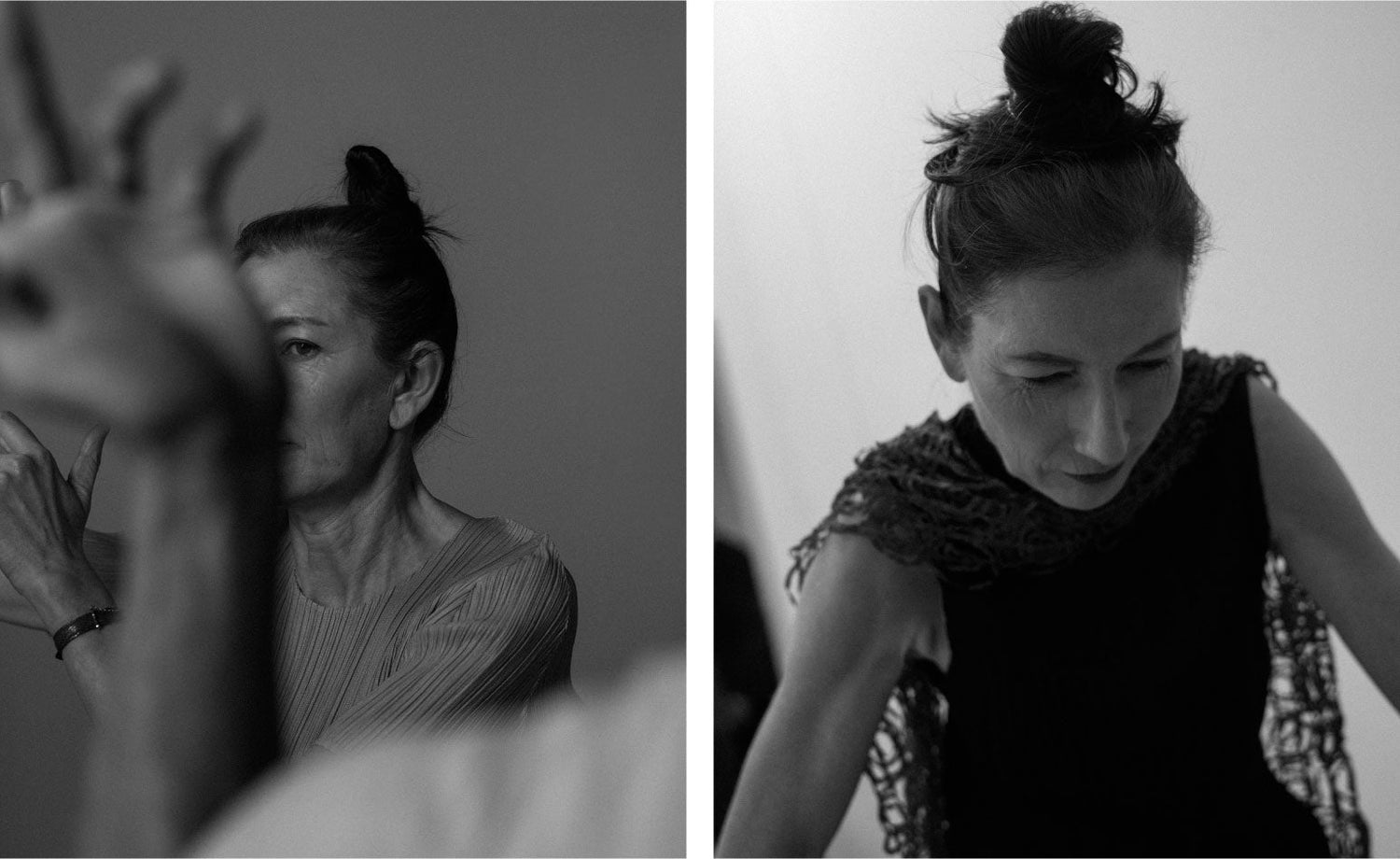A day in the life of Hélène
With PLEATS PLEASE
Part 3: The butoh lesson
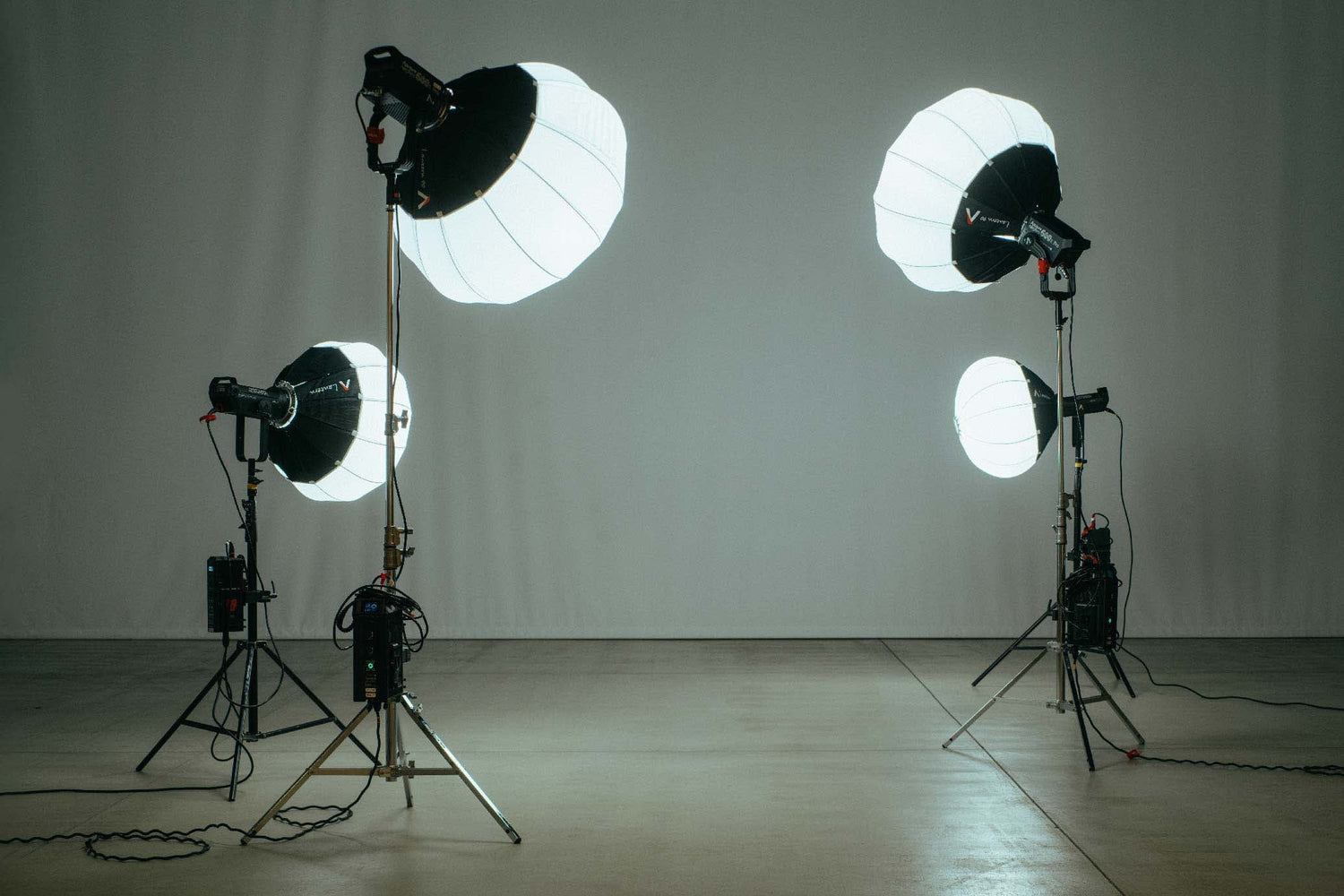
Her name is Hélène Kelmachter.
She wears a skirt from PLEATS PLEASE ISSEY MIYAKE BASICS topped by a thin wool knit with clouds and rainbows on the sleeves from a different brand. Her flat shoes are decorated with an illustration of a cat on the toe. You can tell she's excited just by the way she has coordinated her outfit.
Today, Hélène has come to learn about an aspect of Japanese culture that she has long been interested in.
Butoh dancing. It is a form of physical expression invented in the early 1960s by Tatsumi Hijikata and Kazuo Ohno to deal with the internal problems of the human psyche. Numerous intellectuals have been captivated by its original moves and expressions that depart widely from both classical ballet and modern dance. It began to spread globally in the 1980s and today has fans around the world.
Hélène's teacher for the day is Taketeru Kudo, a noted butoh dancer. It was through him that she first became aware of butoh.
Kudo studied French literature in university, but as he was writing, began to be dissatisfied with what words could express on their own. He began to explore different forms of artistic physical expression, and eventually became acquainted with Koichi Tamano, Hijikata's first student.
“I found what the master was doing to be shockingly metaphysical”
He began to study with Tamano, who was living in San Francisco at the time, but set off on his own in 1992. After a stint with Sankaijuku, Kudo began to hold performances and workshops around the world, focusing mostly on his solo activities, as he does today.
“In my workshops, I employ methods that I have picked up from many places along the way. It doesn't matter whether you are doing classical ballet or contemporary dance, the basics are on the same--the key point is to exercise, stretching your joints and learning how to control the body's axis and form positions. You build the body, or rather, you bring the body back to zero and try to move with your heart and mind instead. ”
When did they first meet? Both say it was so long ago they have forgotten.They were introduced by a common friend who is one of the major figures in the Japanese contemporary art scene and avant-garde. She has watched Kudo's performances for years, but this is Hélène's first time at one of his workshops.
The session starts.
Kudo begins to dance. He lays facedown on the floor, and then slowly starts to crawl. He changes direction, but keeps moving. He continues to crawl forward, now on all fours. Then suddenly his body is wracked with shudders. He jumps up and stands on tip toes. He walks in a squatting position, still shuddering. He slowly turns his body around and stands up. His loose hemp clothes sway.
Hélène stands at Kudo's side and begins to move in reaction to what he is doing.
“We are inside the womb…This is the process by which sea creatures became humans”
He continues to move, guiding her in a calm, peaceful voice.
“How did you change while you were in your mother's womb? Search back through your body's memories”
“Those memories remain at the cell level”
His words are poetic. They are simple, but not simplistic.
In another session, he begins to walk slowly, saying, “Let's become something hard and heavy like a rock, or concrete, or iron.”
“How do you become empty?”
“Don't think about anything”
“Construct a building within the body”
“A hammer appears from the sky. Use it to smash the building”
“Smash each part of yourself until there is nothing left”
At the start, it seemed like Hélène was trying very hard to follow Kudo.
But slowly, the stiffness in her body began to dissipate. The faint contours of her butoh began to appear, as if the image inside her body was spilling out.
Kudo changed too. Over the course of five sessions, he went from "teaching the basic concepts of butoh" to “playing with images and the body.”
Adorned with a kimono bought at a flea market, a very relaxed Hélène walks around waving her hands, whistling, moving like a mythical fox, and most of all, smiling. At that moment when the two dancers moved in perfect synchronization, we the viewers were also in harmony.
“I can't say I understood butoh in this short time, but at least I tried to be closer to its meaning and essence. And I have to say that I enjoyed it a lot and I am grateful to Kudo-san for sharing his art! The most difficult thing for me was to be empty and not think about anything, as when you are practicing meditation. The great butoh dancer of Sankaijuku, Ushio Amagatsu-san – who I had the opportunity to interview some years ago for an exhibition catalogue of the French painter Fabienne Verdier – said that in butoh, you first become neutral, and from there you build up your senses and expression. He used to explain this idea using the image of a cup. If the cup is full, you cannot add anything more; to put something else in it, the cup must first be empty. I think I still have to learn how to be empty.”
Knowing that Issey Miyake's costumes for William Forsythe and the Frankfurt Ballet were the beginning of PLEATS PLEASE, Hélène wanted, through the workshop, to evoke the origin of PLEATS PLEASE by wearing BASICS and NEW COLORFUL BASICS for all sessions.
“As the lightest outfits one could imagine, PLEATS PLEASE are perfectly adapted to dance movements. In a way, they are a tribute to dance, to freedom of movement, to lightness.”
Worn by: Hélène Kelmachter—styling by Hélène. Knitwear, kimono, accessories, and other small items are from her personal wardrobe.
Photography: Kazumasa Harada
Hair and make-up: Hiroyuki Fuwa
Composition: Tamaki Harada + Mari Nakayama | Cawaii Factory
Concept and Direction: Midori Kitamura










